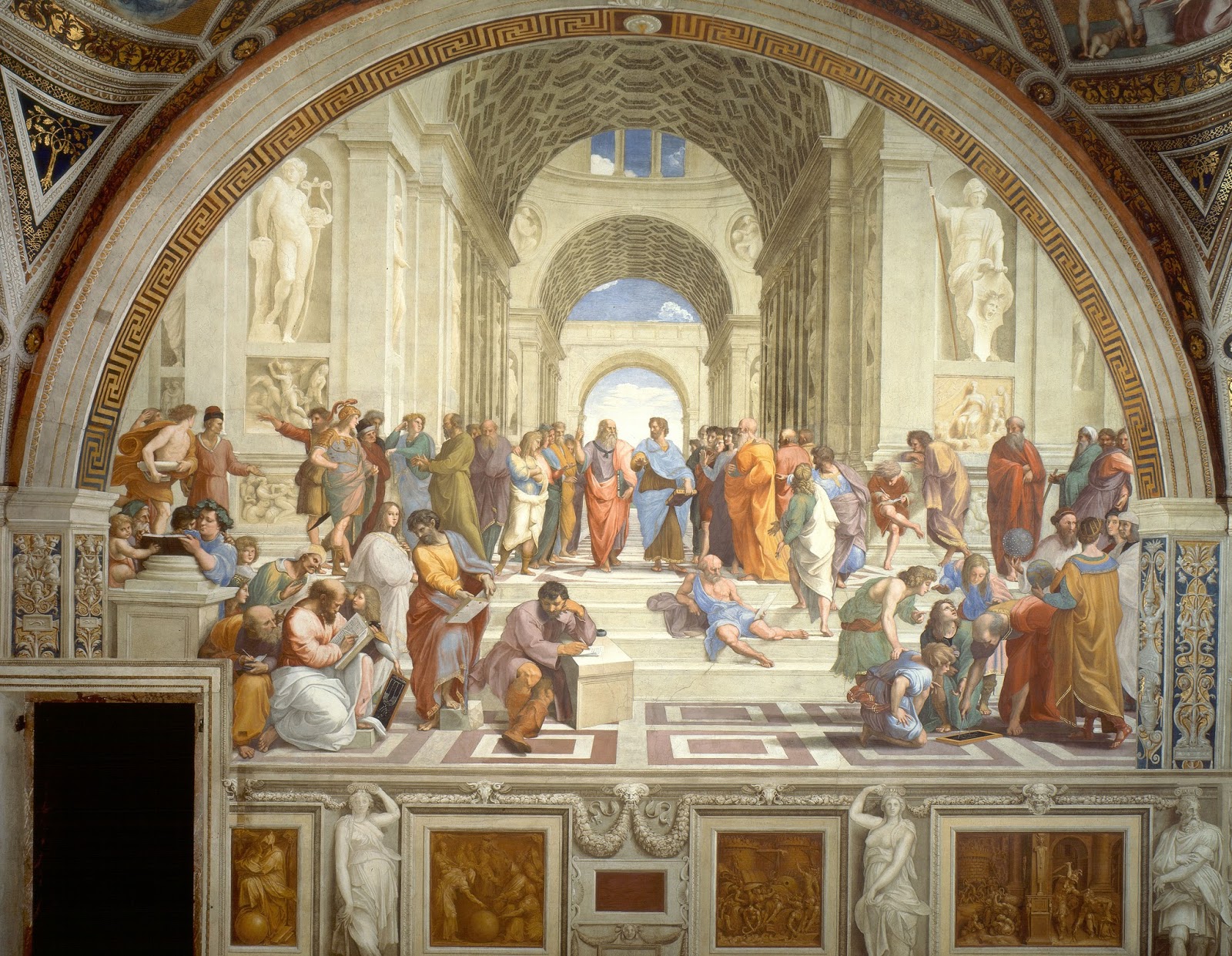Raphael: The School of Athens (1509-1511)
(Vatican, Rome, Italy)
A famous fresco by the Italian master Raffaello Sanzio da Urbino (1483 – 1520). This fresco is part of the so-called Raphael Rooms of the Apostolic Palace in Rome. Raphael was commissioned by Pope Julius II (papacy 1503 - 1513) to decorate the reception rooms. These rooms ('stanze') are now named as the Sala di Costantino ("Hall of Constantine"), the Stanza di Eliodoro ("Room of Heliodorus"), the Stanza della Segnatura ("Room of the Signatura") and the Stanza dell'Incendio del Borgo ("The Room of the Fire in the Borgo"). Each room has its four walls and ceiling decorated. This fresco is part of the Stanza della Segnatura. The room takes its name from the highest court of the Holy See, the "Segnatura Gratiae et Iustitiae", which was presided over by the pope and used to meet in this room around the middle of the 16th century. In the Stanza della Segnatura each fresco has a theme (identified by a separate fresco) - this fresco has the theme "Causarum Cognitio" (= Seek Knowledge of Causes, in other words: Philosophy, the rational truth). The fresco "The Disputation of the Sacrament", also by Raphael, in the same room is the counterpart of this fresco. which has the theme 'the spiritual truth'. The fresco contains at least 49 persons who are in a Greek cross shaped building. Identifying all the persons on the fresco is very difficult - Raphael did not leave any personal notes on this work and the artist Giorgio Vasari (1511-1574) suggested that nearly all Greek philosophers and ancient scientists can be found here. Persons who can be identified with some certainty are: Plato, Aristotle, Socrates, Pythagoras, Euclid, Ptolemy, Zoroaster, Raphael, Sodoma and Diogenes. The identity of the others is speculative. The center of the fresco are Plato (the man in red toga) and standing next to him Aristotle. Plato, probably a portrait of Leonardo da Vinci, is holing a copy of his book Timaeus, and gestures upward to the aetherial realm of his eternal forms. Aristotle is holding a copy of his Nichomachean Ethics and stretches his hand - an indication of the worldliness, the concreteness, gaining knowledge through empirical observation and experience, of his contributions to philosophy. Raphael also included a probable portrait of Michelangelo (the sitting man in the middle leaning against a block of marble) and a self-portrait (The man on the extreme right with the black beret). The two statues in the background are Apollo (god of music, truth, prophecy, the sun and poetry) and Athena (Goddess of wisdom, craft, and war). The four smaller fresco at the bottom contain the siege of Syracuse (214–212 BC) and the death of Archimedes after the siege. Fresco from 1509-1511.
